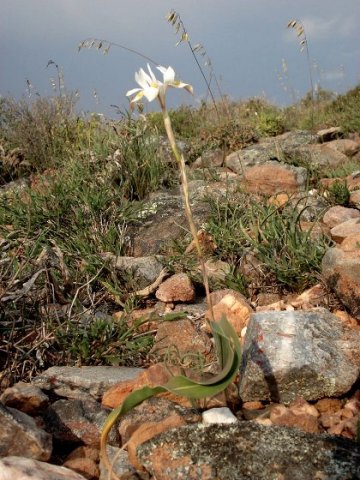Moraea saxicola

Author: Ivan Lätti
Photographer: Judd Kirkel Welwitch
Moraea saxicola is a deciduous, cormous perennial growing a sturdy, erect stem reaching heights from 20 cm to 50 cm.
The corm covered in a finely netted, dark tunic is about 18 mm in diameter. The tunic extends upwards in a collar around the stem-base. Stem branches are few low down and short in the upper ones, covered in leaf-like sheaths.
The species distribution is in the Western Cape and the Northern Cape from the northern part of the Knersvlakte to the Richtersveld, as well as in Namibia.
The habitat is rocky slopes in desert-like conditions and succulent Karoo where the plants are usually wedged in granitic rock crevices. The specific epithet, saxicola is derived from the Latin words saxum meaning rock or boulder and incola meaning resident or inhabitant, referring to the plants setting in habitat. The habitat population is deemed of least concern early in the twenty first century (Goldblatt and Manning, 2014: Taxonomy of the Moraea saxicola complex (Iridaceae: Iridoideae) of arid, western southern Africa, with the new species, M. acocksii, M. geminifolia, M. quartzicola and M. teretifolia. South African Journal of Botany, Volume 91, March 2014, Pages 75-83; Grenier, 2019; Williamson, 2010; iNaturalist; http://redlist.sanbi.org).

